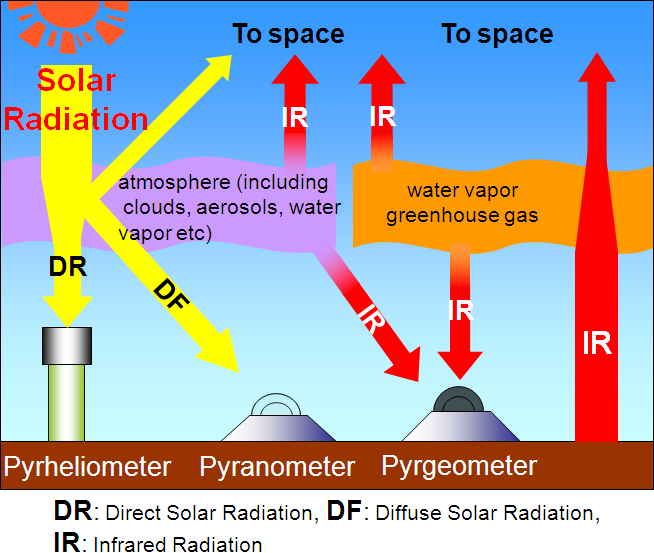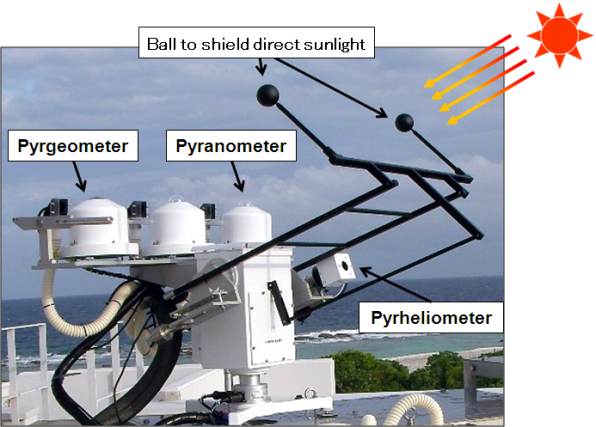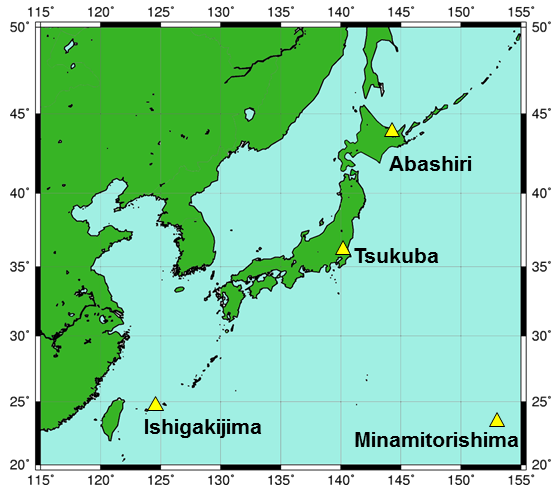This page contains basic information on solar and infrared radiation.
The Japan Meteorological Agency (JMA) has observed solar radiation since 1931, and has performed high-precision observation of solar and infrared radiation (i.e., direct solar radiation, diffuse solar radiation and downward infrared radiation) since 2010 (at five stations until 2024 and four stations since 2024). The data collected help to clarify the nature of all incident radiation energy on the ground surface (i.e., solar radiation energy and infrared radiation energy from the atmosphere (including clouds, aerosols, water vapor, etc.)).

Summary of Solar and Infrared Radiation Observation
Direct solar radiation comes from sunlight reaching the earth's surface directly from the sun. It is possible to calculate Feussner and Dubois's turbidity coefficient values from direct solar radiation as indicators of atmospheric turbidity.
Diffuse solar radiation comes from sunlight reaching the earth's surface after being scattered
by the atmosphere and clouds from all directions in the sky except that of the sun.
Information on water vapor and aerosols in the atmosphere is included in observation data.
Downward infrared radiation consists of infrared rays emitted from the atmosphere to the earth's surface from all directions in the sky. Downward infrared radiation data can be used to monitor global warming because emissions from clouds, water vapor, carbon dioxide etc. in the atmosphere are proportional to the fourth power of the absolute temperature.

|
Precision instruments for solar and infrared radiation observation |
The observation stations at Abashiri, Tsukuba, Ishigakijima and Minamitorishima (see the map below) were chosen in consideration of climatological conditions and regional variations in aerosol characteristics.

Solar and infrared radiation observation stations (As of April 2024)
Observation stations (As of April 2024)
| Station name | Latitude | Longitude | Altitude | WMO station number |
|---|---|---|---|---|
| Abashiri | 44°01.1' | 144°16.8' | 37.6 m | 47409 |
| Tsukuba | 36°03.5' | 140°07.6' | 25.2 m | 47646 |
| Ishigakijima | 24°20.2' | 124°09.9' | 5.7 m | 47918 |
| Minamitorishima | 24°17.3' | 153°59.0' | 7.1 m | 47991 |